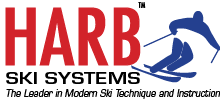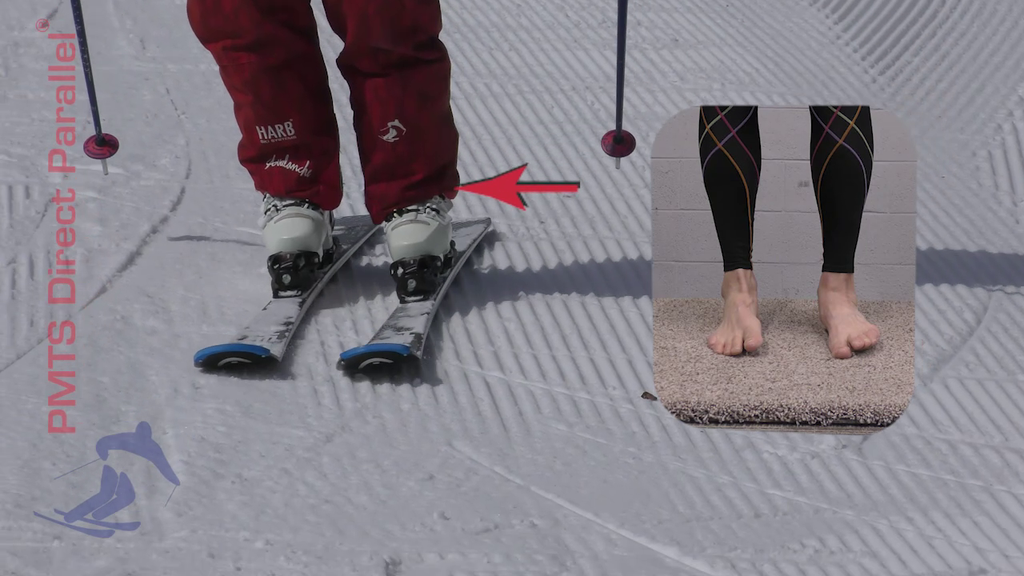Engage the Stance Ski eVideo 4K
by Harb Ski SystemsOverview
When skiers first learn PMTS Direct Parallel technique, it's important that they are passive with the stance foot, both to “unlearn” any inefficiencies from their previous technique, and to focus their efforts on learning the activities of the free foot and leg. Once a skier can balance on their stance ski and use the tipping of the free foot and shortening of the free leg to determine the arc and rate of their turns, then it's time to learn the role of the stance foot. Everting the stance foot – rolling it toward its big-toe or inside edge – creates leverage against the medial sidewall of the ski boot. This movement of the stance foot adjusts the edge grip of the stance ski and permits the skier to make really quick edge-set turns, often useful in moguls. This video shows you how to learn and perform this subtle yet effective movement of your stance foot so that you have more control over how your skis behave and the turns you can make.
Stats
Presenter: Diana Rogers. 42 minutes, 4k, 3.1 GB, Copyright 2023
Content
*Rolling the stance foot toward its big-toe edge to create contact or leverage against the medial sidewall of the boots – in traverses, from the fall line, and in linked, brushed turns
*Relating ski behavior on the snow to the action of the stance foot
*Increasing the range of the motion of the new action of the stance foot – tipping the stance ski to a higher edge angle – in traverses, from the fall line, and in linked, brushed turns
Purpose
Controlling the edge engagement of the stance ski results in...
* Better grip on firm snow
*Tighter turn radius
*Better speed control
*Ability to ski varied conditions like crust or windblown snow
*Ability to make really short, edge-set turns in moguls or narrows
Prerequisites
In order to get the most benefit from this video, you should already...
*Know how to transfer balance to the little-toe edge of the uphill ski (the “Super Phantom Move”). You can learn this in the video Eliminate the Wedge 3 – Super Phantom.
*Be highly-practiced in creating and maintaining balance on the stance ski. You can learn this in the video Balance on Downhill Ski.
*Be highly-practiced in using the free foot and leg to determine the arc and rate of your turns. You can learn this in the video Tighten the Radius of Your Turns.
Related books & videos
*Anyone Can Be and Expert Skier 1 paperback book. This explains the division of roles of the feet in PMTS Direct Parallel – how the stance foot is where we balance, while the free foot and leg have the roles of determining the edge angle and rate of our turns, and adjust our balance side-to-side and fore/aft.
*Eliminate the Wedge 3 – Super Phantom eVideo. Transferring your balance to the uphill, little-toe edge is a prerequisite before you start to become more active with the new stance foot.
*Balance on Downhill Ski eVideo. Another prerequisite – finding and maintaining balance on the stance foot is important so that you do not lose your balance while learning how to roll with the stance foot.
*Tighten the Radius of Your Turns eVideo. Another prerequisite – to be sure that your free foot and free leg are truly dominant in determining your rate of turns and arc of turns.
*Brushed Turns eVideo. This is a good follow-up. It also encourages you to roll the stance foot toward the big-toe edge, and helps you calibrate how far you are rolling and how the ski behavior is a function of the stance foot action.
Click here to read Video Download License Agreement
Click here for eVideo purchasing instructions
Format:
| Format | File Size | Suitable devices | Specs |
| 4k | 3.1 GB | 4k capable tablets, TVs and computer monitors | H.264 mp4; 3840x2160, 29.97 fps; Target 10 Mbps |





Share This